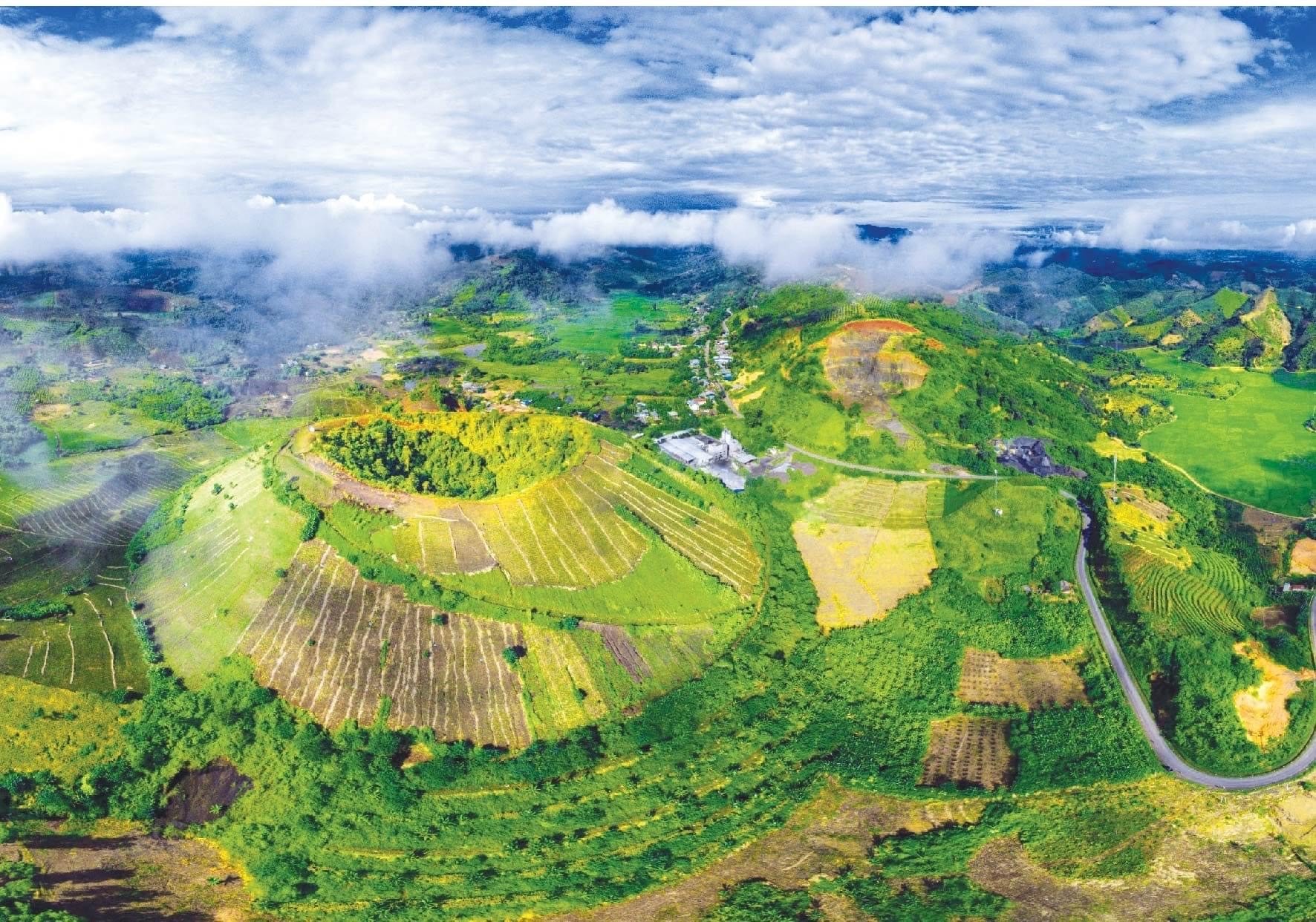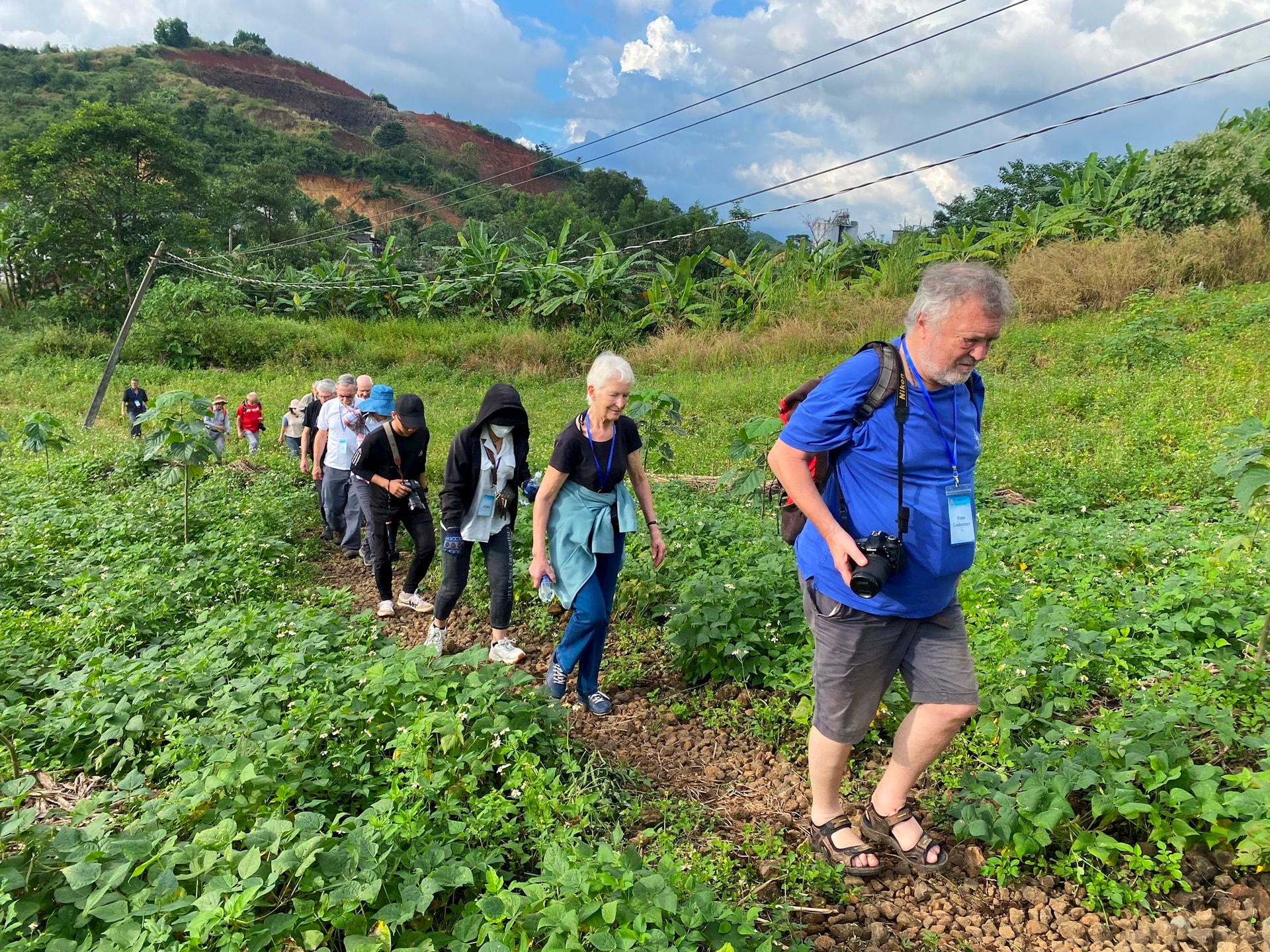
According to scientific research, the Nam Kar volcano is formed from three volcanoes: one main cone and two smaller cones. The main cone is 60 m high, 220 m in diameter, with a small opening about 20 m deep from the summit, and has a typical oval shape. Located at an altitude of 660 m above sea level, it is mainly composed of slag, each slag piece having a diameter of several centimeters. A few tens of meters to the north is a smaller slag cone (S1) 24.2 m high and 605 m above sea level, formed by explosive eruptions, consisting of slag and volcanic bombs with a diameter of about 10 cm bonded together. This slag cone has no opening at the summit; instead, gas escapes create a tubular structure during movement, resembling the shape of a tree trunk. A few dozen meters to the south is the lowest volcanic crater (S2), 22.4 m high and 621 m above sea level. The crater has a horseshoe shape due to lava eruption phases at different times, simultaneously forming a lava field with an area of approximately 4.75 km² . Coal and slag cones were formed in the early stages of eruption when the lava was still rich in gas and had low viscosity, earlier than the formation of the volcanic crater. The lava, containing gas, erupted into the air, broke into fragments, and cooled rapidly. The eruption also created volcanic bombs of various shapes and sizes, which formed a glassy film due to the rapid cooling. Later, as the lava became less gaseous and more fluid, it easily flowed away to form the lava field. With its shape preserved relatively intact, the Nam Kar volcanic mountain range is considered a very young volcano, dating back less than 10,000 years.

Besides its geological value, the Nam Kar volcano is also closely linked to the cultural life of indigenous communities such as the M'nong and Ede. The M'nong people in the area still pass down the legend of the formation of the Nam Kar volcano. According to legend, long ago, there was a vast lake on the mountaintop teeming with fish and lush vegetation. Knowing this, a young man caught fish to grill and eat, unaware that these were fish raised by a god. As a result, after eating the grilled fish, the young man felt an intense itching sensation all over his body, and his face gradually transformed, developing very large ears and a very long nose, a swollen belly, and a muscular physique like an elephant. Because he had become an elephant, he ate a huge amount of food, and the villagers didn't have enough to feed him. The village elders and shamans then cooked sticky rice, corn, beans, and cassava, spreading them on bamboo leaves to lure the elephant to eat. As the elephant ate, the shaman recited incantations to remind it that it was its food.
Today, the crater of this volcano still teems with water and fish, and the local people retain the original name of the mountain, Nam Kar (meaning "fish mountain"). The legend of Nam Kar volcano is also the story of the elephant that the M'nong people often tell in their epics to remind and educate their descendants not to harm natural resources. With its pristine beauty, unique geological value, and deep local culture, Nam Kar volcano is not only a treasure of nature but also a representative destination in the journey to explore the UNESCO Global Geopark of Dak Nong - where the ancient flows of fire still silently tell stories amidst the vast forests of the Central Highlands today.
Source: https://baolamdong.vn/ve-dep-nui-lua-nam-kar-386603.html














































































































Comment (0)